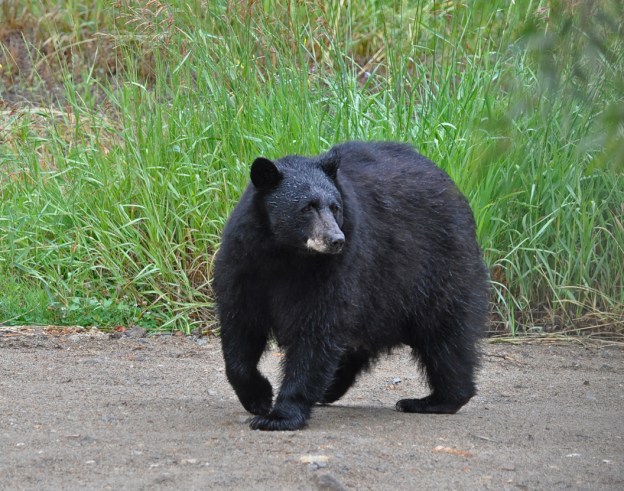
Healthy black bear boar, NL
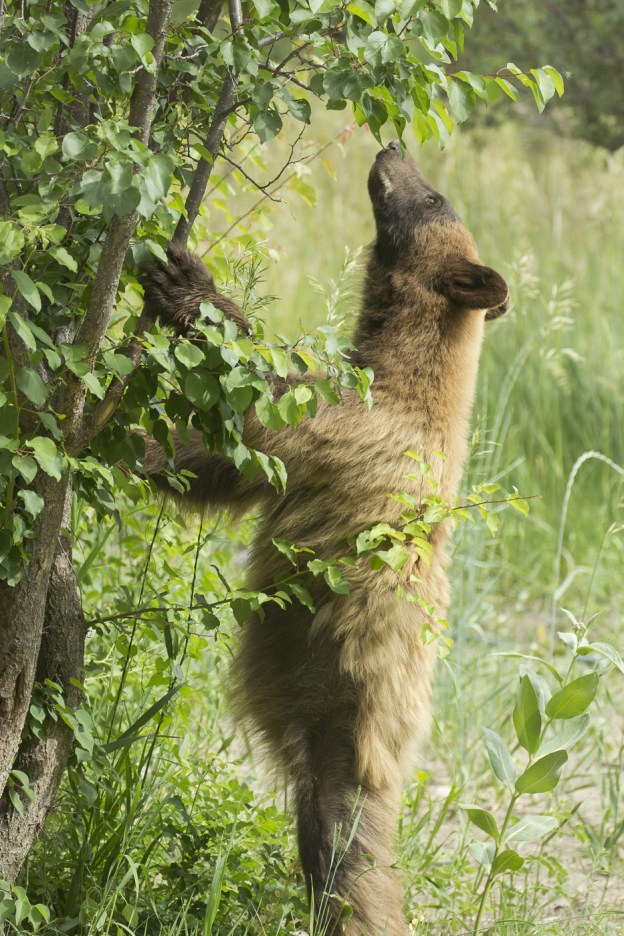
It’s autumn and bears are eating anything they can find. They aren’t picky; it’s calories that count, preferably around 20,000 daily. They search for food 20 hours a day in order to layer on enough fat to see them through the long winter sleep. They are surprisingly dexterous with their non-retractable claws …capable of pulling branches of chokecherries and wild plums toward open mouths, or opening jars, garbage cans, door latches and Hondas to find food. Their noses are so sensitive they can pick up food smells miles away…especially carrion. Although mostly vegetarian, they will eat meat if they can catch it, and dead meat isn’t hard to catch.
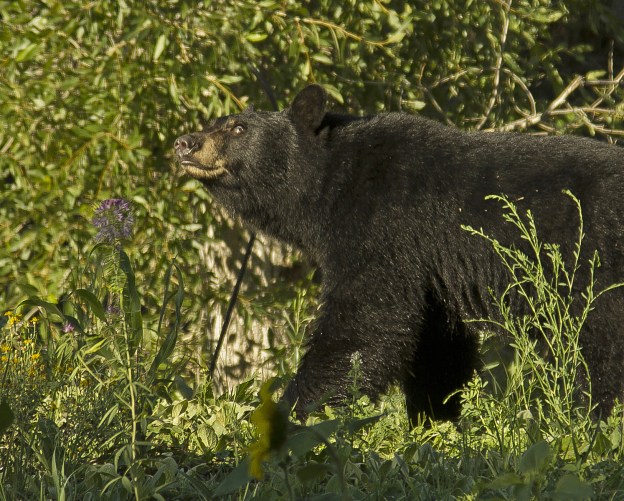
Sniffing for treats
It’s easy to see what bears are eating by looking at the large piles of scat left behind. This insatiable eating period is called Hyperphagia.
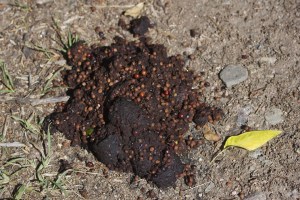
Bear poop showing large quantities of chokecherries
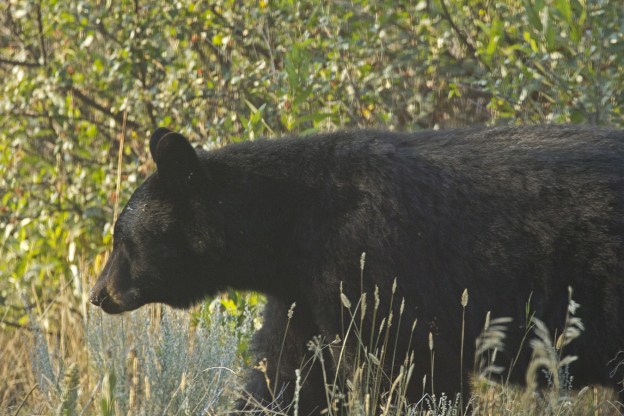
Yard bear looking for berries
Their memories are terrific. They return year after year to a prime berry patch, (or dog food bowl or bird feeder, if carelessly left out). Humans must be very careful not to inadvertently feed bears. A fed bear is a dead bear. Wildlife agencies tag problem bears and will usually try to relocate them, but often the bears return to their bad habits and are killed. Keep bears alive by keeping them wild.
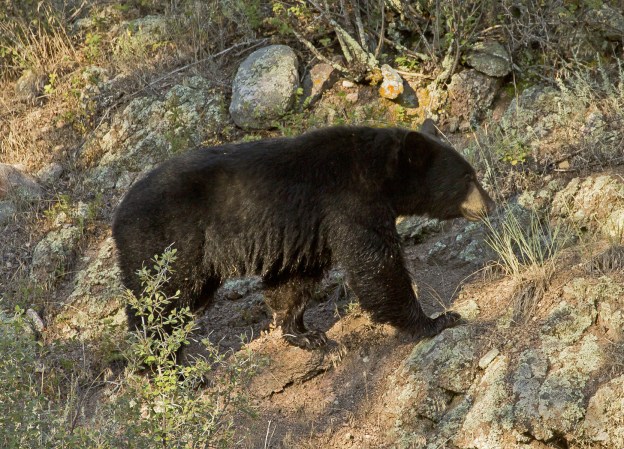
Making a living in the dry foothills is a tough job.
Typically our bears enter their dens sometime in November when the food runs out. With their long, shaggy warm coats it’s not the cold that bothers them: it’s the lack of food. They enter a dormant stage, not a true hibernation. Bears may awaken if disturbed. Their body temperature drops only a few degrees but their heart rate slows to around 10 beats per minute. Throughout the winter their bodies survive on the stored fat they were able to put on in late summer. They lose some 30% of their weight before emerging in spring. Bears don’t eat, drink, urinate or defecate during dormancy.
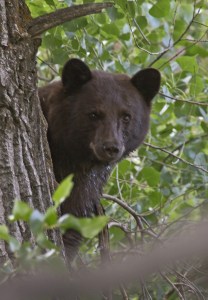
Mom bear hiding in a cottonwood tree
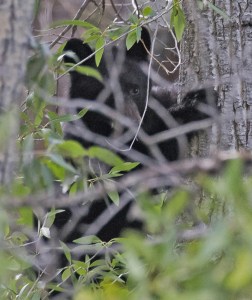
Baby bear in a different tree where mom told it to go hide from the scary human.
Female bears that were inseminated during the mating season in June or July delay embryo implantation until they enter the den. The number of eggs that implant depends upon her weight, age, and state of health. A bear that was unable to accumulate enough fat may reabsorb all embryos to assure her a better chance of survival. Cubs are born in January when a nursing sow’s heart rate soars to 100 beats per minute. Newborn cubs weigh less than a pound.
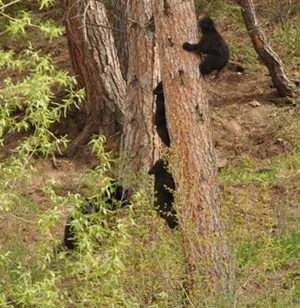
Mom and triplets, NL
Twins and triplets are common. They attach themselves to a teat and nurse while the mother sleeps. Cubs weigh between 10 and 15 pounds by the time they are ready to leave the den in March or April. They stay with the mother a year and a half and will winter with her again in her den. The next spring, yearlings are ready to fend for themselves…like it or not. Mom sends them on their way if they argue. Young bears won’t reach full size and breeding readiness until they are 4 to 5 years old.

Cubs waiting for mom, NL
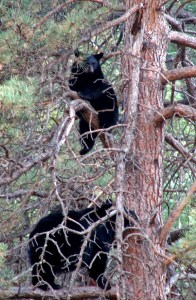
Bigger bears in the tree, NL
Humans and cars are a bear’s worst enemies. Thousands of bears are hunted legally throughout the US and Canada, and many more are hunted illegally for their paws and gall bladders…popular exports to the Asian black market. In captivity a bear will live 20 to 30 years, but in the wild they rarely get beyond 10. However, overall, the North American population is stable and they are not endangered.

Bear in valley with blond stripe down back. Black bears come in many color variations.
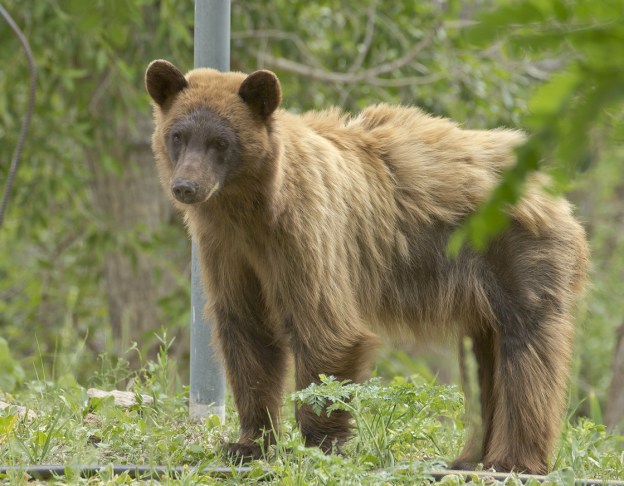
Shaggy blond visitor, disappointed by the bear-proof bird feeder.
Black bears are capable of killing people, but seldom do. Generally they are peaceful and reclusive and try to avoid contact with humans. If you surprise a bear, especially a sow with cubs, and it appears agitated by stamping its feet and “huffing”, back away slowly, don’t run. Pick up any children, then make yourself look big, wave your arms, yell: don’t stare at the bear. Staring at the bear in fright and remaining frozen in place may convince the bear you are challenging it. Very bad idea.

bear tracks look almost human
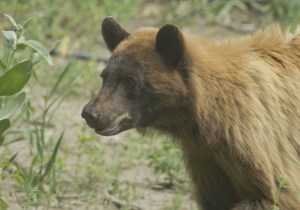
Thanks for joining me as I renew my ambition to post animal tidbits. The impetus was provided by my good friend Robin Ecklund and much of the verbiage was lifted, with her permission, from a bear program she is putting together. The bear pictures with an NL in the caption are by Nancy Loving at her home in Jamestown, CO, the rest are mine.
Today, Sept. 12, is the anniversary of our BIG flood. With lots of help from the county, state and federal governments, much of the local infrastructure has been repaired. On a personal level much still remains to be done, but we have accomplished a huge amount in one year. Think we’ll take a short break and enjoy the autumn colors.
